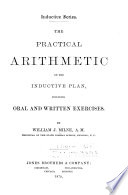 | William James Milne - Arithmetic - 1877 - 402 pages
...days are considered a month, and 12 months a year. For many purposes 4 weeks constitute a month. 2. The common year contains 52 weeks and 1 day, the leap...commonly, each year begins one day later in the week, but the year succeeding leap year begins tin days later. 3. The time required for the earth to revolve... | |
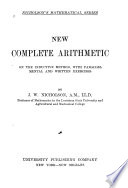 | James William Nicholson - Arithmetic - 1885 - 348 pages
...day is equal to that of the solar year. This end is nearly attained by the following 266. RULE. — Centennial years exactly divisible by 400, and other years exactly divisible by 4, are leap years, and all other years are common years. ÍJ lJ Thus, taking the 400 years from 1601 to 2000, inclusive,... | |
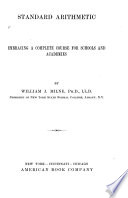 | William James Milne - Arithmetic - 1892 - 440 pages
...year. With this correction the error does not amount to much more than a day in 4000 years. Therefore, Centennial years exactly divisible by 400, and other years exactly divisible by 4, are Leap Years. 4. The reckoning of time among the ancients was very inaccurate. This was owing to their ignorance... | |
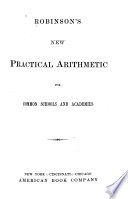 | Horatio Nelson Robinson - Arithmetic - 1892 - 428 pages
...difference would amount to about a day in 400 years, we discard one leap year in every 400 years ; that is, centennial years exactly divisible by 400, and other years exactly divisible by 4, are considered as leap years. Centennial years divisible by 4, but not by 400, are not leap years. Thus,... | |
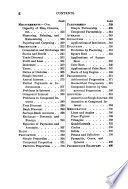 | Horatio Nelson Robinson - Arithmetic - 1892 - 428 pages
...difference would amount to about a day in 400 years, we discard one leap year in every 400 years ; that is, centennial years exactly divisible by 400, and other years exactly divisible by 4, are considered as leap years. Centennial years divisible by 4, but not by 400, are not leaf years. Thus,... | |
 | James Morgan Rawlins - Mental arithmetic - 1899 - 196 pages
...Day (da.). = 1 Week (wk.). = 1 Year (yr.). = 1 Year (yr.). = 1 Leap Year (1. yr.). = 1 Century (0.). Centennial years exactly divisible by 400, and other years exactly divisible by 4, are leap years. Table. 1. January (Jan.) = 31 da. 7. July (July) =81 da. 2. February (Feb.) =28 or 29* da. 8. August... | |
 | James Morgan Rawlins - Arithmetic - 1899 - 300 pages
...Hour (hr.). = 1 Day (da.). = 1 Week (wk.). = 1 Year (yr.). = 1 Leap Year (1. yr.). = 1 Century (C.). Centennial years exactly divisible by 400, and other years exactly divisible by 4, are leap years. 12 Months = 1 Year (yr.). Table. 1. January (Jan.) =31 da. 2. February (Feb.) = 28 or 29* da. 3. March... | |
 | Frank Joseph Schneck - Business mathematics - 1902 - 288 pages
...29th of February. 145. In business, 30 days are usually considered a month, and 12 months a year. 146. The common year contains 52 weeks and 1 day; the leap year 52 weeks and 2 days. Each year begins one day later in the week than the preceding year, except the year following leap... | |
 | George Edward Atwood - Arithmetic - 1902 - 168 pages
...August, October, and December have each 31 days. April, June, September, and November have each 30 days. Centennial years exactly divisible by 400, and other years exactly divisible by 4, are leap years, when February has 29 days. In other years it has 28. As some of the months have 30 days, some 31, and... | |
 | Jacob Henry Minick, Clement Carrington Gaines - Business mathematics - 1904 - 412 pages
...are considered a month, and 12 such months a year. For many purposes 4 weeks constitute a month. 4. The common year contains 52 weeks and 1 day, the leap year 52 weeks and 2 days. Hence, each year begins one day later in the week than did the preceding year, except the year following leap... | |
| |